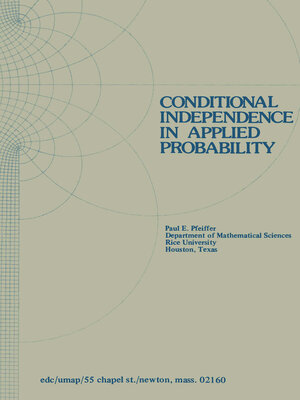Conditional Independence in Applied Probability
ebook ∣ Modules and Monographs in Undergraduate Mathematics and Its Applications
By P.E. Pfeiffer

Sign up to save your library
With an OverDrive account, you can save your favorite libraries for at-a-glance information about availability. Find out more about OverDrive accounts.
Find this title in Libby, the library reading app by OverDrive.



Search for a digital library with this title
Title found at these libraries:
| Library Name | Distance |
|---|---|
| Loading... |
It would be difficult to overestimate the importance of stochastic independence in both the theoretical development and the practical appli cations of mathematical probability. The concept is grounded in the idea that one event does not "condition" another, in the sense that occurrence of one does not affect the likelihood of the occurrence of the other. This leads to a formulation of the independence condition in terms of a simple "product rule," which is amazingly successful in capturing the essential ideas of independence. However, there are many patterns of "conditioning" encountered in practice which give rise to quasi independence conditions. Explicit and precise incorporation of these into the theory is needed in order to make the most effective use of probability as a model for behavioral and physical systems. We examine two concepts of conditional independence. The first concept is quite simple, utilizing very elementary aspects of probability theory. Only algebraic operations are required to obtain quite important and useful new results, and to clear up many ambiguities and obscurities in the literature.







